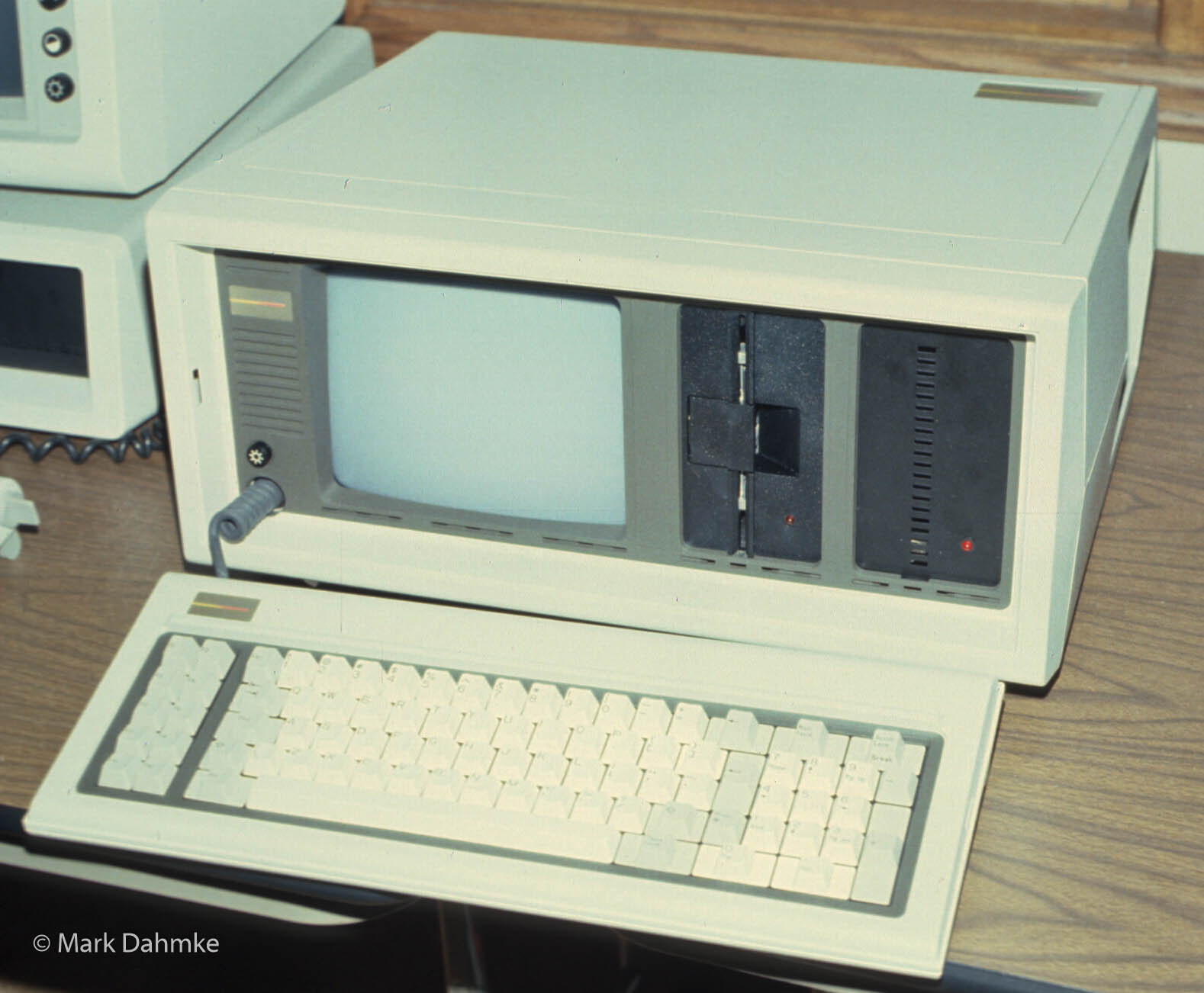Halt and Catch Fire (TV series): a Mini-review
I recently watched Episode 7 of Halt and Catch Fire last week, and Episodes 1 & 2 through Amazon Video. This is a fictional story about the development of a PC clone in 1983. The premise is somewhat plausible. I won’t comment on the soap opera aspects of the series, but there are several things about this story that I found interesting. It is loosely based on a real-life story about the development of the Compaq portable computer. See this article for details about the early days of Compaq. In Episode I, Cardiff Electric hires Joe MacMillan, a former IBM employee. MacMillan drops a copy of BYTE Magazine on the desk of Cardiff engineer Gordon Clark. Clark had written an article for BYTE on the future of “open architecture” which inspires MacMillan to shake up the status quo in a very unconventional way. This caught my attention because from 1979 to 1987 I was a Consulting Editor at BYTE.
The other thing that got my attention was the title: Halt and Catch Fire. The intro to Episode I defined it as: “An early computer command that sent the machine into a race condition, forcing all instructions to compete for superiority at once. Control of the computer could not be regained.” This however is not true at all. “Catch Fire” was intended as a joke – an extension of the machine language instruction “HALT” which just causes the processor to stop processing more instructions. The joke was that if you want to make your computer permanently stop executing instructions, you could build in an HCF instruction. HCF doesn’t cause a race condition or force instructions to somehow compete with each other – it just stops the computer and (if ever actually implemented) would cause the chip to overheat and fail.
The other factual error in the show’s premise, as dealt with in Episode I, was the supposedly secret IBM BIOS code. The engineer Gordon Clark went to great lengths to find the right chip, extract it from the motherboard and decode each byte, to generate a printout of the BIOS. In real life, IBM freely published the source code to the BIOS for all to see. And even if they hadn’t, anyone with a copy of DEBUG (which came with MS-DOS) could easily dump out the source code in a matter of minutes and disassemble it (a disassembler is a software package that reads the binary code and reconstructs the program in human-readable format). [Ok, so the writers took license with this to add drama to the story line…]
IBM did claim copyright on the BIOS and the scene with the IBM lawyers visiting Cardiff Electric is very plausible and did happen to several companies that copied the source code. However it didn’t happen with Compaq. Compaq created their BIOS in a “clean room,” as portrayed in the series. [In the mid-80’s I did some consulting work for IBM’s PC division and worked with their legal department on a couple of issues, so I got to see how things worked from both sides of the fence.]
In late 1982 I wrote the BYTE Magazine review of the Compaq and went to Dallas to meet the founders of the company. I disassembled their BIOS to compare it with IBM’s (they were quite different). And I took with me several programs to test compatibility with the IBM PC and MS-DOS. I was very impressed with the quality of the hardware and level of compatibility of the software.
The founders of Compaq, Rod Canion, Jim Harris and Bill Murto, formerly were mid-level managers at Texas Instruments. The way Rod told it to me, the three were disappointed by TI’s lack of desire to build a competitive personal computer (the TI-99 was not very well received in the marketplace). I asked him how they decided to build an IBM clone and he laughed and said that they knew they wanted to start their own business, but weren’t sure in the beginning if they were going to sell pizzas or build personal computers. Unlike the fictional Cardiff Electric, this trio did a startup and obtained venture capital from Kleiner Perkins. They hired programmers who had never looked at the BIOS code published by IBM and built a compatible BIOS from scratch, which took about nine months. They even showed me the card table from their original office space where they had mapped out the design of the first portable PC clone.
The series Halt and Catch Fire is, as television goes these days, not too bad. As the owner of a software business, it’s also a cautionary tale… be careful who you hire! Sometimes you have to break some eggs to make an omelet, or to use another metaphor, cannibalize your product line before someone else does it for you, but the Joe MacMillan character takes it to a whole new level. Based on what I’ve seen so far, I’d give it 3.5 to four stars out of five.

Above: a Compaq Portable Computer, version 1, with 1.2MB floppy drive and 10MB hard drive.
